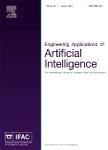版权所有:内蒙古大学图书馆 技术提供:维普资讯• 智图
内蒙古自治区呼和浩特市赛罕区大学西街235号 邮编: 010021

作者机构:COMSATS Univ Islamabad Dept Comp Sci Lahore Campus 1-5 KM Def Rd Raiwind Rd Lahore Pakistan Lahore Garrison Univ Dept Software Engn DHA Phase 6 Sect C Lahore Pakistan Natl Univ Sci & Technol NUST Pakistan Navy Engn Coll PNEC Elect & Power Engn Dept Habib Ibrahim Rehmatullah Rd Karachi Pakistan Govt Coll Univ Dept Comp Sci Lahore Pakistan
出 版 物:《ENGINEERING APPLICATIONS OF ARTIFICIAL INTELLIGENCE》 (Eng Appl Artif Intell)
年 卷 期:2025年第142卷
核心收录:
学科分类:0808[工学-电气工程] 08[工学] 0811[工学-控制科学与工程] 0812[工学-计算机科学与技术(可授工学、理学学位)]
主 题:Fire detection Smoke detection Video Image Deep learning Computer vision Indoor and outdoor environment Artificial intelligence
摘 要:This survey paper reviews the challenges and recent advancements in Artificial Intelligence (AI) video-based smoke and fire detection systems, with particular focus on both indoor and outdoor environments. The main problem addressed is the high false alarm rates (ranging from 3.4% to 29.49% across various systems) and the challenges posed by environmental variability, dataset scarcity, and the complexity of real-time detection. The paper critically examines key methodologies, including traditional approaches, deep learning techniques (with accuracy rates reaching up to 98.72% and false alarm rates reduced to as low as 0.61%), hybrid methods, and domain transfer-based tools, highlighting their evolution and current trends. This survey also provides an indepth analysis of publicly available datasets and evaluation metrics, such as detection accuracy (ranging from 79.66% to 98.72%), robustness to dynamic environments, and real-time processing capabilities (with some systems achieving up to 333 frames per second (FPS). By synthesizing insights from 33 papers published between 2013 and 2024, the survey not only summarizes the current state of the art but also identifies emerging trends, such as the increasing use of automatic feature learning and multi-fusion systems, which have demonstrated significant improvements in detection accuracy. The paper concludes by advocating for future research focused on improving system robustness and reducing false alarms through the integration of visible range cameras and traditional sensors, with the goal of achieving more accurate and reliable fire detection in surveillance systems.